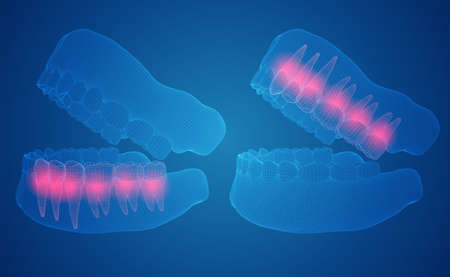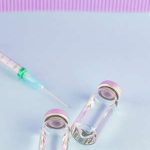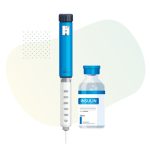1. Understanding Removable Partial Dentures
When deciding between removable partial dentures (RPDs) and fixed bridges, its essential to understand how each option works. Removable partial dentures offer a flexible and cost-effective way to replace missing teeth, making them a popular choice for many patients.
What Are Removable Partial Dentures?
Removable partial dentures are dental appliances designed to replace one or more missing teeth. They consist of a gum-colored base that supports artificial teeth and are held in place by metal or plastic clasps that attach to natural teeth.
Benefits of Removable Partial Dentures
There are several advantages to choosing removable partial dentures, especially if youre looking for an affordable and non-invasive solution.
- Affordability: RPDs are typically less expensive than fixed bridges.
- Non-Invasive: No need for surgery or altering existing teeth.
- Convenience: Easy to remove for cleaning and maintenance.
- Flexibility: Can be adjusted or replaced as needed.
Materials Used in Removable Partial Dentures
The materials used in RPDs can impact their durability, comfort, and appearance. Here’s a comparison of common materials:
| Material | Pros | Cons |
|---|---|---|
| Acrylic | Affordable, easy to adjust | Less durable, bulkier |
| Cobalt-Chrome Metal | Strong, thinner design, comfortable fit | More expensive, may cause allergies in some people |
| Flexible Resin | Natural appearance, lightweight, comfortable | Less durable over time, harder to repair |
Functionality and Daily Use
Removable partial dentures restore your ability to chew and speak while also improving your smile. However, they do require daily maintenance. Cleaning them properly and storing them in water when not in use helps extend their lifespan.
Caring for Your Removable Partial Dentures
- Daily Cleaning: Use a soft brush and denture cleaner.
- Avoid Hot Water: Can warp the material.
- Store Properly: Keep them moist when not in use.
- Regular Checkups: Visit your dentist for adjustments if needed.
Who Should Consider Removable Partial Dentures?
If youre looking for an affordable, flexible solution to replace missing teeth without undergoing invasive procedures, RPDs might be the right choice. They are ideal for individuals who want an option that can be easily removed and adjusted as needed.
2. Exploring Fixed Dental Bridges
Fixed dental bridges are a popular choice for replacing missing teeth, offering a more permanent solution compared to removable partial dentures. They are designed to stay in place and function like natural teeth, providing stability and durability.
What Are Fixed Dental Bridges?
A fixed dental bridge is a prosthetic device that fills the gap left by one or more missing teeth. It consists of artificial teeth (pontics) held in place by crowns attached to the adjacent natural teeth or dental implants. Unlike removable dentures, bridges are cemented in place and cannot be taken out daily.
How Do Fixed Bridges Work?
The process of getting a fixed bridge typically involves:
- Preparation: The dentist reshapes the adjacent teeth to accommodate the crowns that will support the bridge.
- Impression Taking: A mold of your teeth is created to ensure a precise fit for your custom-made bridge.
- Temporary Bridge: A temporary bridge may be placed while the permanent one is being fabricated.
- Final Placement: Once ready, the permanent bridge is cemented into place, restoring function and appearance.
Durability and Longevity
Fixed bridges are known for their durability. With proper care, they can last 10–15 years or even longer. They offer better stability than removable dentures since they do not shift while eating or speaking.
Comparison: Fixed Bridges vs. Removable Partial Dentures
| Feature | Fixed Dental Bridges | Removable Partial Dentures |
|---|---|---|
| Permanence | Permanently cemented in place | Can be removed daily |
| Stability | Feels more like natural teeth | Might shift while speaking or eating |
| Maintenance | Cared for like natural teeth (brushing & flossing) | Needs to be removed and cleaned separately |
| Longevity | 10–15+ years with proper care | Typically lasts 5–10 years before needing replacement |
| Treatment Process | Requires reshaping adjacent teeth or implants | No need to alter existing teeth significantly |
A More Permanent Solution
If you’re looking for a long-term solution with enhanced stability, fixed dental bridges may be the right choice. They provide a natural feel and restore both function and aesthetics effectively. However, it’s important to consult with your dentist to determine if this option suits your specific dental needs.
Caring for Your Fixed Bridge
- Brush and floss daily: Keeping the area clean helps prevent decay around the supporting teeth.
- Use special floss or interdental brushes: These tools help clean under and around the bridge.
- Avoid hard foods: Chewing on ice or hard candies can damage your bridge.
- Regular dental checkups: Routine visits ensure your bridge remains in good condition.
Understanding how fixed bridges work can help you make an informed decision when choosing between them and removable partial dentures. In the next section, we’ll explore additional factors to consider when selecting the best tooth replacement option for your needs.

3. Key Factors to Consider
When deciding between removable partial dentures and fixed bridges, its essential to compare key factors like cost, maintenance, durability, and comfort. Each option has its advantages and drawbacks, so evaluating these aspects will help you determine which one best suits your needs and lifestyle.
Cost
The price of dental restorations can vary depending on materials, location, and the complexity of the procedure. Generally, removable partial dentures are more affordable upfront compared to fixed bridges. However, fixed bridges may provide better long-term value due to their durability.
| Factor | Removable Partial Dentures | Fixed Bridges |
|---|---|---|
| Initial Cost | Lower | Higher |
| Long-Term Investment | Might need replacements over time | More durable, may last longer |
Maintenance
Caring for your dental restoration is crucial for maintaining oral health. Removable partial dentures require daily removal for cleaning and should be soaked overnight. Fixed bridges, on the other hand, are cleaned similarly to natural teeth but may require special flossing techniques to clean underneath.
| Factor | Removable Partial Dentures | Fixed Bridges |
|---|---|---|
| Daily Cleaning Routine | Must be removed and cleaned separately | Treated like natural teeth with extra care for gaps |
| Special Care Needed? | Avoid dropping; soak overnight | Use floss threaders or water flossers for cleaning under the bridge |
Durability
The lifespan of your dental restoration depends on materials used and how well they are maintained. Fixed bridges tend to last longer than removable partial dentures because they are securely attached to adjacent teeth.
| Factor | Removable Partial Dentures | Fixed Bridges |
|---|---|---|
| Lifespan | Around 5-10 years with proper care | Around 10-15 years or longer with good maintenance |
| Sensitivity to Damage | Easier to break if dropped or mishandled | Tends to be stronger but may require repairs if supporting teeth weaken |
Comfort & Fit
Your comfort level with a dental restoration plays a significant role in your decision. Removable partial dentures may take time to adjust to and can sometimes feel bulky. Fixed bridges feel more natural because they are permanently secured in place.
| Factor | Removable Partial Dentures | Fixed Bridges |
|---|---|---|
| Sensation in the Mouth | Might feel bulky at first; requires adjustment period | Tends to feel more natural since it’s fixed in place |
| Affect on Speech & Eating | Might take time to adjust; can shift slightly while eating or talking | No movement while speaking or chewing |
| User Convenience | Easier to remove but requires daily handling | Permanently placed; no need for removal |
Selecting between removable partial dentures and fixed bridges depends on your priorities. If affordability and ease of replacement are most important, removable dentures might be the better choice. If you prefer a more permanent solution that feels natural and lasts longer, a fixed bridge could be worth the investment.
4. Oral Health and Long-Term Impact
When choosing between removable partial dentures and fixed bridges, its important to consider how each option affects your oral health over time. Both solutions come with their own benefits and potential drawbacks in terms of surrounding teeth, jawbone health, and overall hygiene.
Impact on Surrounding Teeth
Both removable partial dentures and fixed bridges rely on neighboring teeth for support, but they do so in different ways:
| Option | Effect on Surrounding Teeth |
|---|---|
| Removable Partial Dentures | May put pressure on natural teeth through clasps, which can lead to wear or loosening over time. |
| Fixed Bridges | Require the adjacent teeth to be reshaped and crowned, which permanently alters them but provides stable support. |
Jawbone Health Considerations
The health of your jawbone is crucial when replacing missing teeth. The way each option interacts with the bone structure differs:
- Removable Partial Dentures: Since they sit on the gums without direct stimulation to the jawbone, they do not prevent bone loss in the missing tooth area.
- Fixed Bridges: While they provide a permanent solution, they also do not stimulate the underlying jawbone like natural tooth roots or dental implants would.
Oral Hygiene and Maintenance
Your daily oral care routine may change depending on whether you choose a removable denture or a fixed bridge:
| Option | Cleaning & Maintenance |
|---|---|
| Removable Partial Dentures | Easier to clean since they can be taken out, but require daily soaking and brushing separately from natural teeth. |
| Fixed Bridges | Permanently attached, requiring special flossing techniques or water flossers to clean under the bridge. |
The Long-Term Outlook
If preserving natural teeth is a priority, fixed bridges might offer more stability but require altering healthy teeth. On the other hand, removable partial dentures are less invasive but may contribute to gradual changes in bite alignment due to bone loss. Regular dental check-ups are essential for maintaining either option and ensuring long-term oral health.
5. Which Option is Right for You?
Choosing between removable partial dentures and fixed bridges depends on several factors, including your dental health, lifestyle, and personal preferences. Below, we break down key considerations to help guide your decision.
Your Dental Condition
The current state of your teeth and gums plays a significant role in determining the best option for you.
| Factor | Removable Partial Dentures | Fixed Bridges |
|---|---|---|
| Number of Missing Teeth | Best for multiple missing teeth in different areas | Best when only one or a few adjacent teeth are missing |
| Condition of Adjacent Teeth | No need to modify existing teeth | Requires healthy adjacent teeth for support |
| Gum Health | Suitable for patients with weaker gums | Requires strong gum support for long-term success |
Lifestyle and Comfort Preferences
Your daily habits and comfort level with dental appliances can influence your choice.
- If you prefer something non-permanent: Removable partial dentures allow flexibility and can be taken out as needed.
- If you want a more natural feel: Fixed bridges function like natural teeth and don’t require removal.
- If maintenance is a concern: Bridges require routine brushing and flossing, while dentures need special cleaning solutions.
Budget Considerations
The cost of treatment may also impact your decision. Generally, removable partial dentures tend to be more affordable upfront, while fixed bridges have higher initial costs but may last longer with proper care.
A Quick Comparison of Costs:
| Treatment Type | Initial Cost | Long-Term Maintenance Costs |
|---|---|---|
| Removable Partial Dentures | Lower upfront cost | May require adjustments or replacements over time |
| Fixed Bridges | Higher initial investment | Tends to last longer with proper care |
Your Decision: Consulting a Dentist
The best way to determine the right solution is by consulting a dental professional. They can assess your oral health, discuss your goals, and recommend the most suitable option based on your unique needs.
The Bottom Line:
- If affordability and flexibility are important to you, removable partial dentures might be the better choice.
- If stability and a natural feel are your priorities, fixed bridges could be the ideal solution.
- Your dentist can provide personalized recommendations based on your specific situation.
No matter which option you choose, proper care and regular dental visits will help ensure long-lasting results for a healthy, confident smile!


